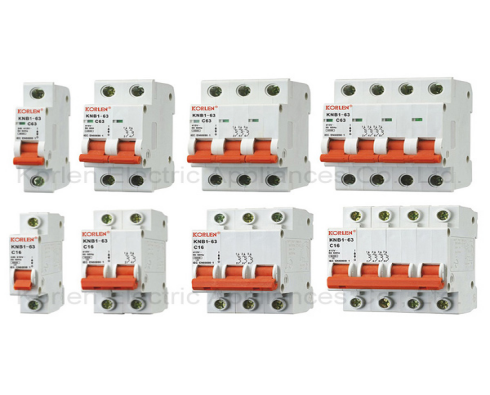Thermal treatment and safety design are the key to the development of LED lighting
For common incandescent bulbs, fluorescent lamps, and energy-saving bulbs, even if the product itself may generate heat, the high heat of the components can still be effectively isolated, so that the light source and the power socket will not cause unexpected public security problems due to heat. However, LED solid-state lighting is different. Once the LED components are concentrated at a single point of high temperature operation, more positive measures must be taken for heat treatment, and at the same time, active and effective heat treatment mechanisms can be used to avoid public security problems. ..
Traditional light sources or lamps often have the problem of high heat during the operation process, such as halogen bulbs or incandescent bulbs. If they are in the form of incandescent lamps, the tungsten filament is heated in a specially treated lamp bulb environment to produce light.
In fact, the high temperature is generated on the filament rather than the lamp holder. Even though the lamp holder will indirectly generate high temperature due to the radiant heat and heat conduction of the lamp bulb glass or metal due to the tungsten filament, the generated temperature is within the acceptable safe range. Coupled with indirect contact conduction, the safety is relatively high.
LED solid-state light source heat treatment is more complicated than traditional lamps
However, if the lamp is replaced by a solid-state LED Light source, its heat treatment may become a new application safety issue. Most people think that LED has the advantages of high energy conversion efficiency and low driving energy, and it is naturally safe to use. However, in order to achieve the purpose of daily lighting applications, LED solid-state light sources must strengthen the unit by increasing the power of a single group of components The output lumens of the device, for example, the lamp factory will adopt the integrated form of multiple LED components to enhance the output effect, and the simultaneous operation of multiple components can also improve the problem of the LED solid-state light source light type biased point light source, so that the LED solid-state light source technology can produce lamps like bulb Surface light effect.
At the development site, to enhance the output lumens of the unit, a higher current must be applied to make the PN junction of the LED chip produce more lumens, but the higher current will also make the temperature of the single-point LED component increase and make it more difficult Treatment, even in the form of multi-component combination in order to improve the light performance and luminous efficiency of the lamp, will also exacerbate the high temperature problem of the LED Lamp and make the heat dissipation problem more difficult to deal with.
Looking at the current development trend of the LED lamp market, most LED light source module factories will first use niche market products as the main development force. Because of the high unit price and high profit, they can also quickly enter the development of more advanced LED light sources through technological differences. In the market, for example, downlights, wall lights, and ceiling lights for interior decoration and situational lighting applications have become a more common design form of LED light source lamps. The power-saving benefits of replacing traditional lamps are also the most concerned by related companies.
Basically, LED light source lamps and lanterns must focus on the thermal management design. In the case of downlights, wall lamps and ceiling lamps that may be used in closed or semi-closed life cycles, they pose more stringent challenges. Lamp developers must choose from materials and products More resources are invested in configuration, active / passive heat dissipation mechanism, driver chip design, etc., to avoid product security problems.

LED embedded lamps are small in size, and often adopt multi-component integration, and the heat dissipation design of the module is more difficult.
Circuit Breaker is an electrical device used in an electrical panel that monitors and controls the amount of amperes (amps) being sent through the electrical wiring. Circuit breakers come in a variety of sizes. For instance, 10, 15 and 20 amp breakers are used for most power and lighting needs in the typical home. Some appliances and specialty items (washers, dryers, freezers, whirlpools, etc.) will require a larger circuit breaker to handle the electrical load required to run that appliance.
Circuit Breaker is composed of 4 parts, Ie. , the insulating case, operating mechanism, contact system and tripping device, featuring quick make and break and free trip. The types of common circuit breaker are: Miniature Circuit Breaker /MCB,Residual Current Circuit Breaker /RCCB,Leakage Circuit Breaker,RCBO, Moulded Case Circuit Breaker /MCCB. As a largest Circuit Breaker manufacturers in china, Korlen electrical produces Circuit Breaker more than 3 million monthly.

|
rame class |
63A |
|
Rated working voltage |
240V/415V |
|
Rated frequency |
50/60Hz |
|
Rated working current |
1, 3, 6, 10, 16, 20, 25, 32, 40, 50, 63A |
|
Making and breaking capacity |
6000A(6~40A), 4500A(50, 63A) |
|
Release type |
B, C, D |
|
Poles |
1, 2, 3, 4P |
|
Mechanical life |
20000 |
|
Electric life |
4000 |
If you have any questions,please contact with us directly,welcome to visit our factory.For inquly.please send mail directly to us.
Circuit Breaker
Low Voltage Breaker,Air Circuit Breakers,Earth Leakage Circuit Breaker,Vacuum Circuit Breaker,Circuit Breaker,Motor Breaker
Wenzhou Korlen Electric Appliances Co., Ltd. , https://www.korlenelectric.com